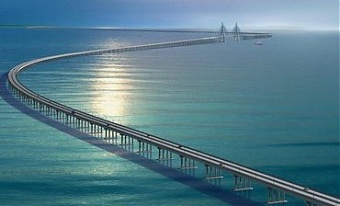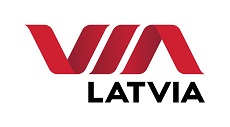Construction, Estonia, Financial Services, Legislation, Transport
International Internet Magazine. Baltic States news & analytics
Sunday, 06.07.2025, 05:21
Saaremaa bridge would be 2 times more expensive than ferries
 Print version
Print version |
|---|
The ministry is planning to conduct a new survey concerning the cost of the Saaremaa bridge by March 2019 the latest. The present impact assessment looking at both a bridge and a tunnel as alternatives dates from 2011. Based on that study, which explores an option where the state would itself finance the construction, users of the bridge or the tunnel would pay a toll during 20 years and from then on using the connection could be free.
Ain Tatter, head of the department for roads and railways at the Estonian Ministry of Economic Affairs and Communications, said that the government subsidy required for the project of the company OU Saarte Sillad, led by Raivo Hein, would be approximately two times bigger than the present ferry subsidy, whereas users of the bridge would have to pay a toll during about 50 years.
In addition, the official pointed out unreasonable risks to the stability of the connection with the islands of Muhu/Saaremaa until the completion of the permanent link.
Furthermore, if it becomes clear as a result of a Natura appraisal process that a bridge cannot be built for environmental reasons, a tunnel would require a subsidy about three times the size of the present subsidy for ferries.
The price indications for both the bridge and the tunnel date from the 2011 survey and have to be adjusted to current prices. In addition, the availability and prices of mineral resources have to taken into account if another large-scale project, such as Rail Baltic, is implemented simultaneously.
"Basically, the adjusted survey may not take a full year as both the inputs from the 2011 survey as well as a corresponding appraisal methodology can be used. The government set March as the end date for the conduct of the survey being guided by the idea that when a new coalition agreement and a four-year action plan of the government will be drawn up in connection with the 2019 elections, politicians will have an updated impact assessment by that time the latest to decide simultaneously about using the option for ferries, concluding a new ferry service contract and its duration, as well as follow-on activities concerning a permanent link, including whether it should be done as a PPP [public-private partnership] project, using a solution where the construction is financed by the state, or some other solution that is the most favorable for the state," he added.
The Estonian government must notify the shipper of the wish to use the ferry option in 2022 at the latest, whereas by that time the construction of a potential permanent link would not yet have started according to the logic of the PPP project put forward by the entrepreneurs.
Hein announced in January this year that he hopes to start work to build a bridge between the mainland and the island of Muhu in 2020 if the project gets the backing of the state, in which case the 500-million-euro bridge would be ready in three years.
The Cabinet decided last week that the Ministry of Economic Affairs and Communications would conduct by March 2019 a study of the construction cost and operating cost of a permanent link between Muhu and the mainland complete with an updated socio-economic impact assessment, regional newspaper Saarte Haal reported.
Muhu and Saaremaa, Estonia's biggest island, are connected by a road built on a dam.








 «The Baltic Course» Is Sold and Stays in Business!
«The Baltic Course» Is Sold and Stays in Business!

